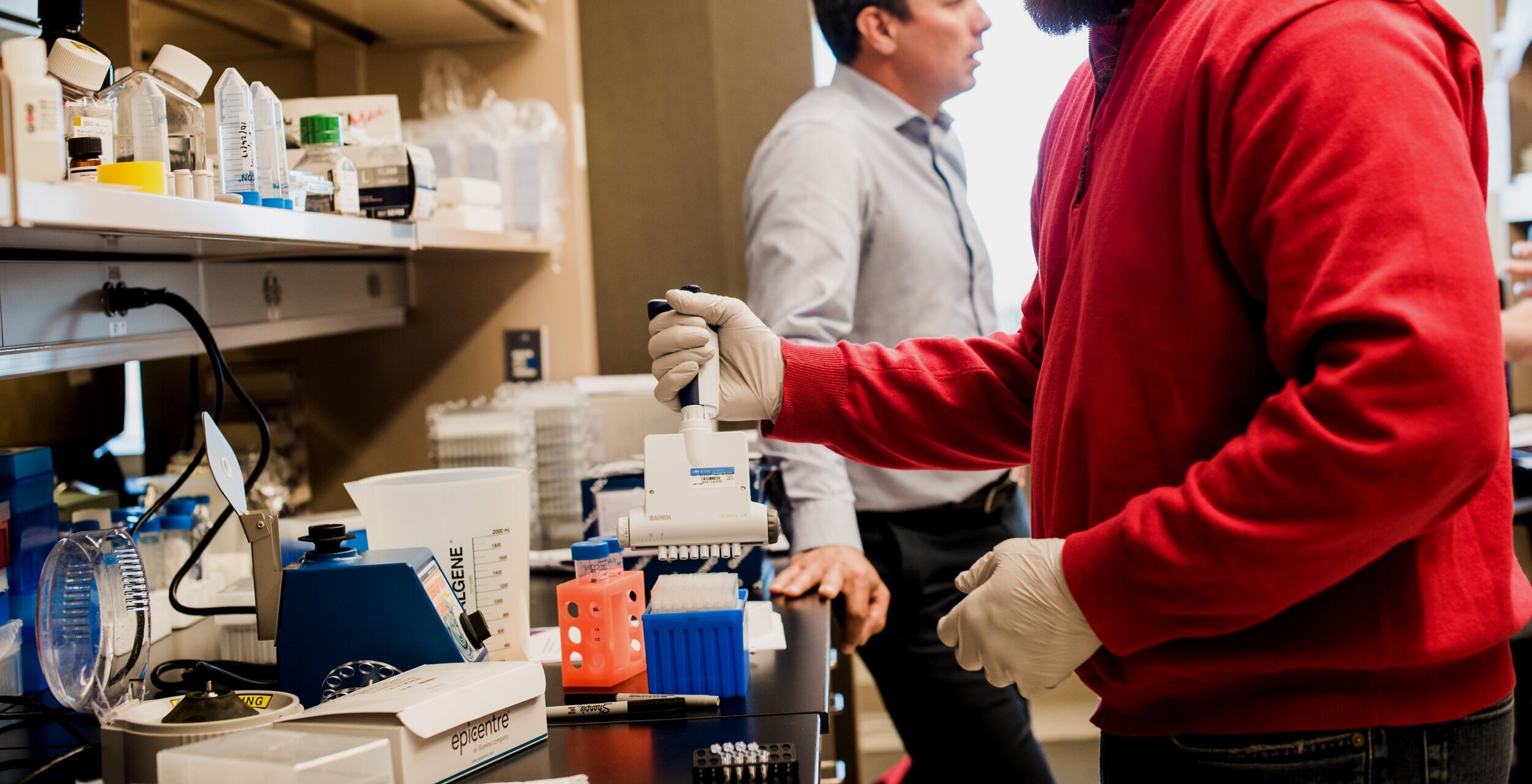
Research
COVID-19 Research
Like everyone else, our world was rocked by COVID-19. But true scientists can’t turn off their minds during a global pandemic just because our labs are closed and we’re told to stay home. As the earliest reports were coming out about the hyper-inflammatory response to SARS-CoV-2 and its mechanism of host infection, we realized that our own work in Down syndrome and on the interferon response could help inform COVID-19 science.
We fought to get back into our labs to help research COVID-19. And, we pushed hard to educate scientists, doctors, and the community on the unique impact COVID-19 would have on people with Down syndrome.
One major outcome of this work is the COVIDome Project, which was built on the foundational pipelines first established in the Human Trisome Project. The goal of the COVIDome Project is to generate multidimensional datasets from COVID-19 patients in order to enable the development of better prevention, diagnostic, and therapeutic tools for clinical management.
The COVIDome data is open to the public through the online research portal called the COVIDome Explorer. We expect that the COVIDome Explorer will rapidly accelerate COVID-19 data sharing, hypothesis testing, and discoveries worldwide.
Dr. Espinosa is Co-Principal Investigator for the COVIDome Project with the University of Colorado Vice Chancellor of Research, and much of the Espinosa Lab team has contributed to the COVIDome Project.
Featured Publications
To expedite integrated and collaborative COVID-19 research, the team completed multi-omics analysis of hospitalized COVID-19 patients, including matched analysis of the whole-blood transcriptome, plasma proteomics with two complementary platforms, cytokine profiling, plasma and red blood cell metabolomics, deep immune cell phenotyping by mass cytometry, and clinical data annotation. We refer to this multidimensional dataset as the COVIDome. We then created the COVIDome Explorer, an online researcher portal where the data can be analyzed and visualized in real time. We illustrate herein the use of the COVIDome dataset through a multi-omics analysis of biosignatures associated with C-reactive protein (CRP), an established marker of poor prognosis in COVID-19, revealing associations between CRP levels and damage-associated molecular patterns, depletion of protective serpins, and mitochondrial metabolism dysregulation.
Using a mouse model of Down syndrome (DS) with a segmental duplication of a genomic region encoding four of the six interferon receptor genes (Ifnrs), the team demonstrated that these animals over express Ifnrs and are hypersensitive to IFN stimulation. When challenged with viral mimetics that activate Toll-like receptor signaling and IFN anti-viral responses, these animals overproduce key cytokines, show exacerbated liver pathology, rapidly lose weight, and die. Importantly, the lethal immune hypersensitivity, accompanying cytokine storm, and liver hyperinflammation are blocked by treatment with a JAK1-specific inhibitor. Therefore, these results point to JAK1 inhibition as a potential strategy for attenuating the cytokine storm and consequent organ failure during overdrive immune responses. Additionally, these results indicate that people with DS, who carry an extra copy of the IFNR gene cluster encoded on chromosome 21, should be considered at high risk during the COVID-19 pandemic.
This publication reports the results of a cross-sectional multi-omics analysis of hospitalized COVID19 patients revealing that seroconversion status associates with distinct underlying pathophysiological states. Low antibody titers associate with hyperactive T cells and NK cells, high levels of IFN alpha, gamma and lambda ligands, markers of systemic complement activation, and depletion of lymphocytes, neutrophils, and platelets. Upon seroconversion, all of these processes are attenuated, observing instead increases in B cell subsets, emergency hematopoiesis, increased D-dimer, and hypoalbuminemia. We propose that seroconversion status could potentially be used as a biosignature to stratify patients for therapeutic intervention and to inform analysis of clinical trial results in heterogenous patient populations.